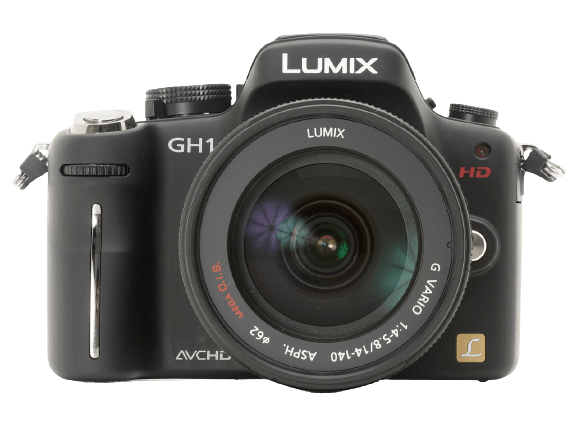Panasonic Lumix DMC GH1 Specs and Scores

The Panasonic Lumix DMC GH1 scores 42/100 in our evaluation. This mirrorless camera was announced on 03/03/2009 and released in the same year, with a launch price of $880. The camera’s dimensions are 124 x 90 x 45mm and it weighs 385g (0.85lbs).
Considering its age, the GH1’s specifications may not be as competitive in today’s market. However, it still offers a decent camera experience for those looking for a lightweight and compact option. The GH1 remains a respectable choice for those on a budget or starting out in photography.
Panasonic Lumix DMC GH1 Overview and Optics
The optics of the Panasonic Lumix DMC GH1 receive a score of 47/100. This camera features a 12.1-megapixel sensor with a shooting speed of 3 frames per second. The sensor is a CMOS type, paired with a Venus Engine HD processor. The DXOMARK score for the sensor is 64. The GH1 uses a Micro Four Thirds sensor size, and the lens mount is also Micro 4/3. Image stabilization is present, and the aspect ratio is 4:3.
In the current market, these specifications are modest. The 12.1-megapixel count is lower than many contemporary cameras, and the shooting speed of 3 frames per second is relatively slow. However, the Micro Four Thirds sensor size and lens mount provide flexibility in lens options. Image stabilization is a valuable feature, and the 4:3 aspect ratio is a standard format.
The Panasonic Lumix DMC GH1’s optics are adequate for casual photographers. While not cutting-edge, the camera offers basic features and compatibility with a range of lenses. The GH1 may not be the top choice for professionals, but it can serve as a suitable option for hobbyists or those on a budget.
Panasonic Lumix DMC GH1 Video Performance
The Panasonic Lumix DMC GH1 holds a video score of 56/100, which positions it in the middle of the market. Its maximum video resolution is Full HD, with dimensions of 1920 x 1080, providing clear and detailed footage. The camera supports a maximum video frame rate of 60fps, ensuring smooth motion capture for fast-moving subjects.
However, the GH1 lacks built-in time-lapse functionality, which may disappoint some users looking for this creative feature. When compared to current cameras, the GH1’s video capabilities are decent but not exceptional, as many newer models offer 4K resolution and additional features such as time-lapse and slow-motion recording.
The Panasonic Lumix DMC GH1 offers satisfactory video performance for casual users, but those seeking advanced features or higher resolution may consider other options.
Panasonic Lumix DMC GH1 Features and Benefits
The Panasonic Lumix DMC GH1 scores 36/100 in the features category. This score reflects the limited capabilities of the camera compared to newer models. The GH1 has a 3-inch screen with a resolution of 460,000 dots, lacking touchscreen functionality. Although it does have a flip screen, it does not include GPS, WIFI, or Bluetooth capabilities.
In today’s market, these specifications fall behind current standards. Most modern cameras offer touchscreen displays, higher screen resolutions, and wireless connectivity options. The lack of GPS, WIFI, and Bluetooth on the GH1 may limit its versatility for some users.
Despite the low feature score, the Panasonic Lumix DMC GH1 still provides quality performance in other areas. However, potential buyers should consider newer models with more advanced features to ensure a well-rounded photography experience.
Panasonic Lumix DMC GH1 Storage and Battery
The Panasonic Lumix DMC GH1 receives a storage and battery score of 21/100. This camera contains one memory card slot, compatible with SD and SDHC cards. In today’s market, this limited compatibility may not be sufficient for those needing additional storage options or faster write speeds. Additionally, the GH1 does not support USB charging.
The camera’s battery life offers 320 shots per charge, utilizing the DMW-BLB13 battery type. While this capacity may suffice for casual users, it falls short compared to the battery life of more advanced cameras in today’s market. The GH1’s storage and battery capabilities are underwhelming, which is reflected in its low score.
